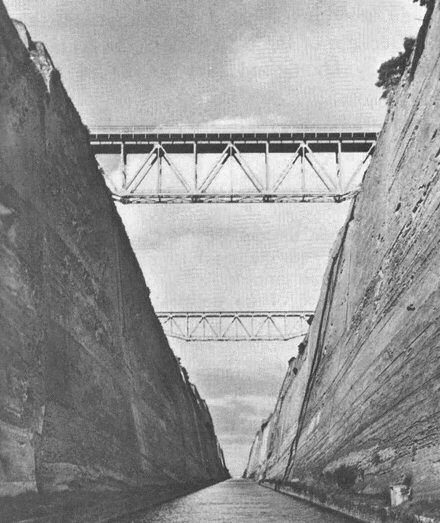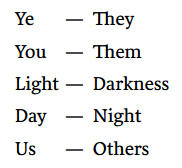
16
FIRST THESSALONIANS
Writer
The author doubtless was Paul. He called himself by that name twice (1:1; 2:18). His associates at the time of composition were Silas and Timothy, the very men who assisted Paul in the evangelization of Thessalonica (1:1; cf. Acts 17:1–9). The geographical movements of the author from Philippi to Thessalonica to Athens to Corinth (2:2; 3:1, 6; cf. Acts 16–18) correspond to Paul’s recorded journey. The typical Pauline style of an opening salutation, blessing, prayer of thanksgiving, followed by a major section on doctrine and practice, and ending with a personal greeting and benediction can be traced in the book. Distinctive Pauline words and phrases (e.g. faith, love, and hope; 5:8; cf. Col. 1:4–5) are dotted throughout the Epistle.
Several Church Fathers recognized these features and acknowledged the Epistle to be from Paul. Among them were Marcion, Irenaeus, Tertullian, and Clement of Alexandria. It was also listed with the Pauline letters in the Muratorian Canon.
City of Thessalonica
The city was founded in 315 b.c. by Cassander who named it after his wife, the stepsister of Alexander the Great. When Rome organized Macedonia into a province in 146 b.c., Thessalonica was made its capital. It soon grew into the second largest city of that area, next only to Philippi which was about one hundred miles to the northeast. As a free city, it had its own government, ruled by politarchs (Acts 17:6).
It had a commercially strategic location. Situated at the head of the Thermaic Gulf, it was able to serve as a seaport for the rich agricultural plains of Macedonia. It was also the largest city on the Via Egnatia, the main highway between Rome and the region north of the Aegean Sea. In commerce with the Orient, it almost rivaled Corinth and Ephesus. Its mercantile importance no doubt attracted a good number of Jews since there was an active synagogue in the city.
Today the city still stands, bearing the name Salonika and having a population of over 200,000.
Establishment of the Church
After overnight stops at Amphipolis and Apollonia, Paul with Silas and Timothy came to Thessalonica from Philippi (Acts 17:1; a.d. 50). For three Sabbaths Paul had the opportunity to preach in the Jewish synagogue. His logical reasoning had a double thrust: first, the Old Testament predicted that the Messiah or Christ had to suffer, to die, and to rise again; second, Jesus of Nazareth fulfilled in His life, death, and resurrection those prophecies (Acts 17:2–3). As a result, some of the Jews, and "of the devout Greeks a great multitude, and of the chief women not a few" believed and identified themselves with the missionary team (Acts 17:4). During those three weeks and shortly after Paul’s synagogue ministry was over, a great number of pagan idol worshipers also were converted (1 Thess. 1:9).
The unbelieving Jews, full of rage and jealousy, then hired a mob to stir up the unbelieving Gentiles and to assault the house of Jason, possibly the meeting place of the Christians and the lodging site of the missionary team. When they did not find Paul and his companions there, they dragged Jason and some of the Thessalonian believers before the politarchs. They brought several false charges of insurrection and treason against the Christians. The rulers and the inhabitants were troubled over the accusations, but when they investigated the situation, they released Jason and his friends.3 Because of the persecution, the team was conducted out of town secretly by night, and they journeyed on to Berea (Acts 17:5–10).
The ministry at Thessalonica lasted approximately one month, although some have argued for a longer stay. Such advocates state that Paul must have stayed long enough to receive two financial gifts from Philippi (Phil. 4:16), to have worked with his hands to set a precedent (2:9; 2 Thess. 3:6–13), and to have evangelized such a large number of pagans. However, these events could have been achieved during an intensive ministry of one month. Paul did work night and day. The overwhelming success of his ministry no doubt provoked the unbelieving Jews to envy and worried the political authorities. Some key converts out of Thessalonica were later associated with Paul in the ministry: Demas (2 Tim. 4:10), Secundus (Acts 20:4), Gaius (Acts 19:29), and Aristarchus (Acts 19:29; 20:4; 27:2).
Time and Place
Forced out of Thessalonica, Paul and his team went to Berea where many Jews and Greek proselytes believed through his synagogue ministry. When the unbelieving Jews of Thessalonica heard that Paul was preaching in Berea, they came to that city, stirred up the people, and forced him out of that city also. The Berean Christians personally conducted Paul out of Macedonia to Athens in Achaia; Silas and Timothy remained in Berea to establish the work. At Athens Paul told the believers that when they returned to Berea they should charge Silas and Timothy to rejoin him in Athens (Acts 17:10–15). While Paul waited for them, he preached in the synagogue, in the marketplace, and on Mars’ Hill (Acts 17:16–34). After the two associates came to Athens, Paul became burdened over the spiritual condition of the Thessalonians so he sent Timothy back to establish and to comfort them in the midst of their persecutions (3:1–5). At this time Silas was also sent to Macedonia, probably to Philippi or Berea.

A close-up view of the Corinth Canal
postle knew positively that the Thessalonians were elected by God to salvation by the manner in which they received him and his message (1:5; cf. 2:13); by the exemplary lives they lived, having received the gospel outwardly with much affliction and inwardly with joy produced by the Holy Spirit (1:6–7); by the quick spread of their testimony elsewhere (1:8); and by the report given to him by others concerning the Thessalonians’ conversion experience (1:9). The majority of the members were pagans who had turned to God from idols ("work of faith") to serve God ("labour of love") and to await the imminent appearing of Christ ("patience of hope"). Theirs was a faith in a living Person who died, rose, and ascended, and who could come at any moment.
2:1–12
In the next section Paul defended his integrity against the criticisms of those unbelieving Jews who questioned his motives. In so doing, he outlined the characteristics of the model servant of God. Paul was not afraid of persecution, as some charged, for after he was beaten in Philippi, he boldly preached at Thessalonica in the midst of his adversaries (2:1–2). In a series of negatives, he claimed that his methods were not out of deceit, uncleanness, guile, men-pleasing, flattery, or covetousness, nor of seeking glory of men. Rather, he asserted that he pleased God who was the judge of his heart, that he treated them both as a nursing mother and a father, that he imparted his soul as well as the gospel, that he worked with his hands to support himself financially lest anyone think that he was after their money, and that his behavior was above reproach.
2:13–20
Paul reminded them that they received his message as the authoritative word of God and that they were persecuted by their countrymen just as the Judean Christians were persecuted by their fellow Jews. He then gave a sixfold description of the Jewish nation to show that the persecution of Paul by the Thessalonian Jews was identical to that received by Jesus Christ. He told them that he tried to return to their city at least twice, probably from Berea, and that Satan hindered him, no doubt through the antagonism of the Macedonian Jews. He then testified that their genuine salvation would be his cause to rejoice at the coming of Christ.
3:1–13
The third chapter was discussed under Time and Place (pp. 278–79). Here Paul explained his purpose in sending Timothy, his joy over Timothy’s report, his prayer for a future visit to see them and to correct their doctrinal and moral deficiencies, and his prayer for their love and stability.
4:1–8
The pagan Thessalonians brought into their Christian experience some faulty misconceptions about love, courtship, and marriage. To correct them, Paul used such terms as: beseech, exhort, received of us how ye ought to walk and to please God, abound, and commandments (4:1–2). Paul’s authoritative words on the subject came "by the Lord Jesus." He then logically demonstrated that sexual purity was part of the will of God for a sanctified life, that purity protects the holiness and honor of the involved parties, and that purity or virginity was contrary to the philosophy of a godless world. He argued that abuse of sexual purity defrauded the other person, that it would bring the judgment of God, and that such sin was ultimately against God who placed His Spirit within the believer’s body.
4:9–12
Paul acknowledged that all believers were divinely taught to love one another (cf. 1 John 3:14) and that the Thessalonians were doing just that, but he admonished them to "increase more and more." Specifically, they needed to manifest their love by not being an annoyance to others and by working industriously in order to maintain a testimony to the unsaved and to have no material needs. Apparently some of the believers, in a practical misapplication of the belief that Christ could come at any moment, had stopped working and had become a problem to the others (cf. 2 Thess. 3:6–14).
4:13–18
In the interval between the establishment of the church and Timothy’s return visit, some of the believers had died, either through natural causes or persecution. The living Christians were concerned over the relationship of their departed loved ones to themselves and to the return of Christ. Paul acknowledged that sorrow was appropriate, but that it should be of a different kind than that of a hopeless world. The believer should realize that the departed Christian is with Christ and that he will return when Christ comes for the true Church. His coming will be announced in a threefold fashion: a shout, the voice of the archangel, and the trump of God. At that instant the spirit of the departed believer will return to be united with a resurrected body; then the living Christians will be translated into immortal, incorruptible bodies; both groups will be caught up to meet Christ in the air; and they will be with Him forever. Death dissolves physical relationships, but it does not sever the spiritual union of believers.
5:1–11
In a series of contrasts, Paul proved that believers would not go into the Day of the Lord, namely the tribulation in which the wrath of God would be poured out:

The hope that the believer has is that Christ will save or deliver him from the wrath of the Day of the Lord, a period of time that will surprise the unsaved. The nature of the child of God is just the opposite to the character of the unsaved man who is suited for the Day of the Lord.
5:12–22
Paul then charged the believers to know their spiritual leaders personally, to understand the latter’s responsibilities, and to esteem them highly (5:12–13). In a series of six imperatives (5:14–15), he exhorted them about proper relationships to both the saved and the unsaved at Thessalonica. Another list of eight commands followed (5:16–22), outlining their responsibilities to their own spiritual development and to the exercise of spiritual gifts in their midst.
5:23–28
He then prayed that their total being would be preserved blameless until the coming of Christ (5:23). He assured them that God would preserve them (5:24). He ended with a typical request for prayer in his behalf, a greeting, a charge, and a benediction.